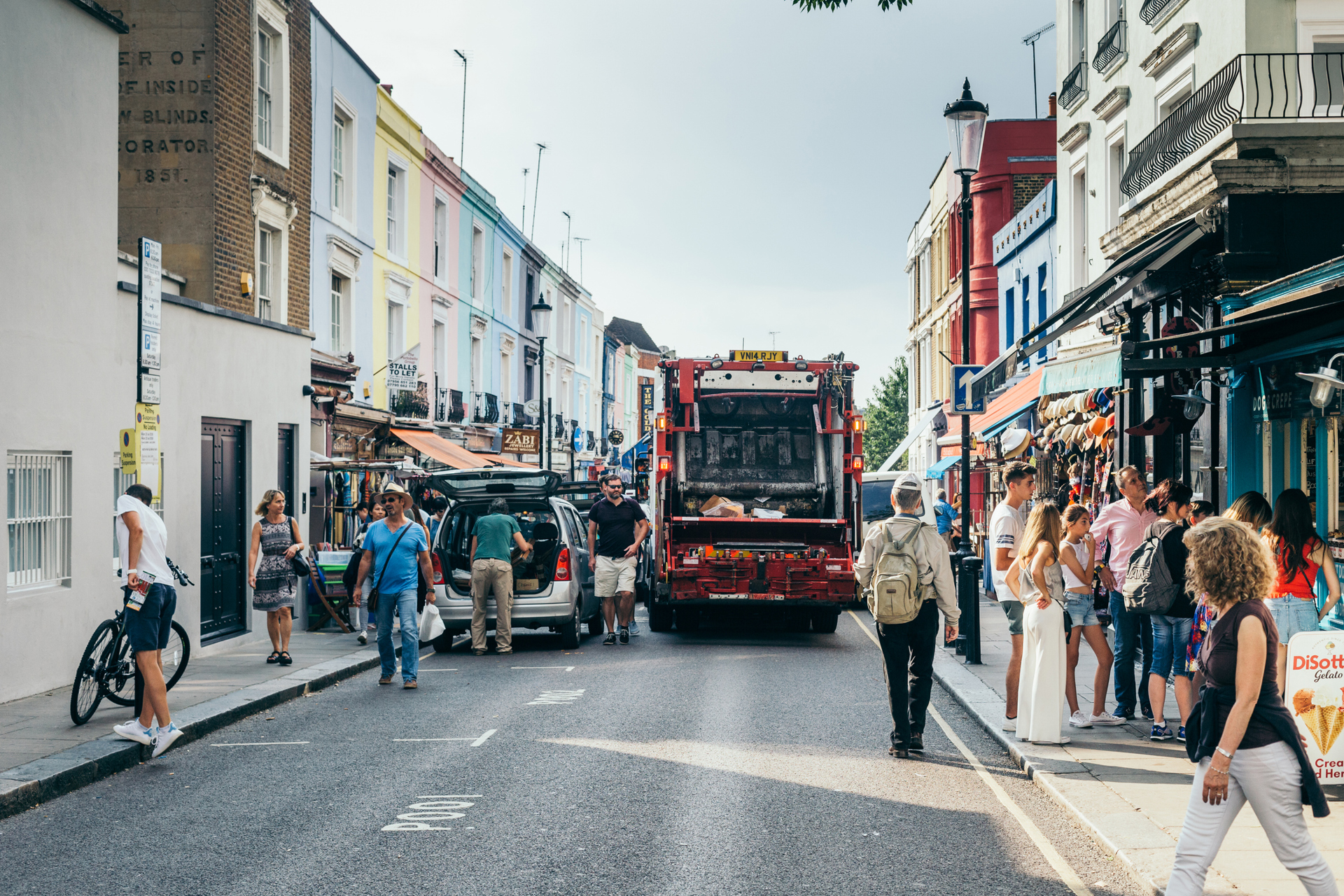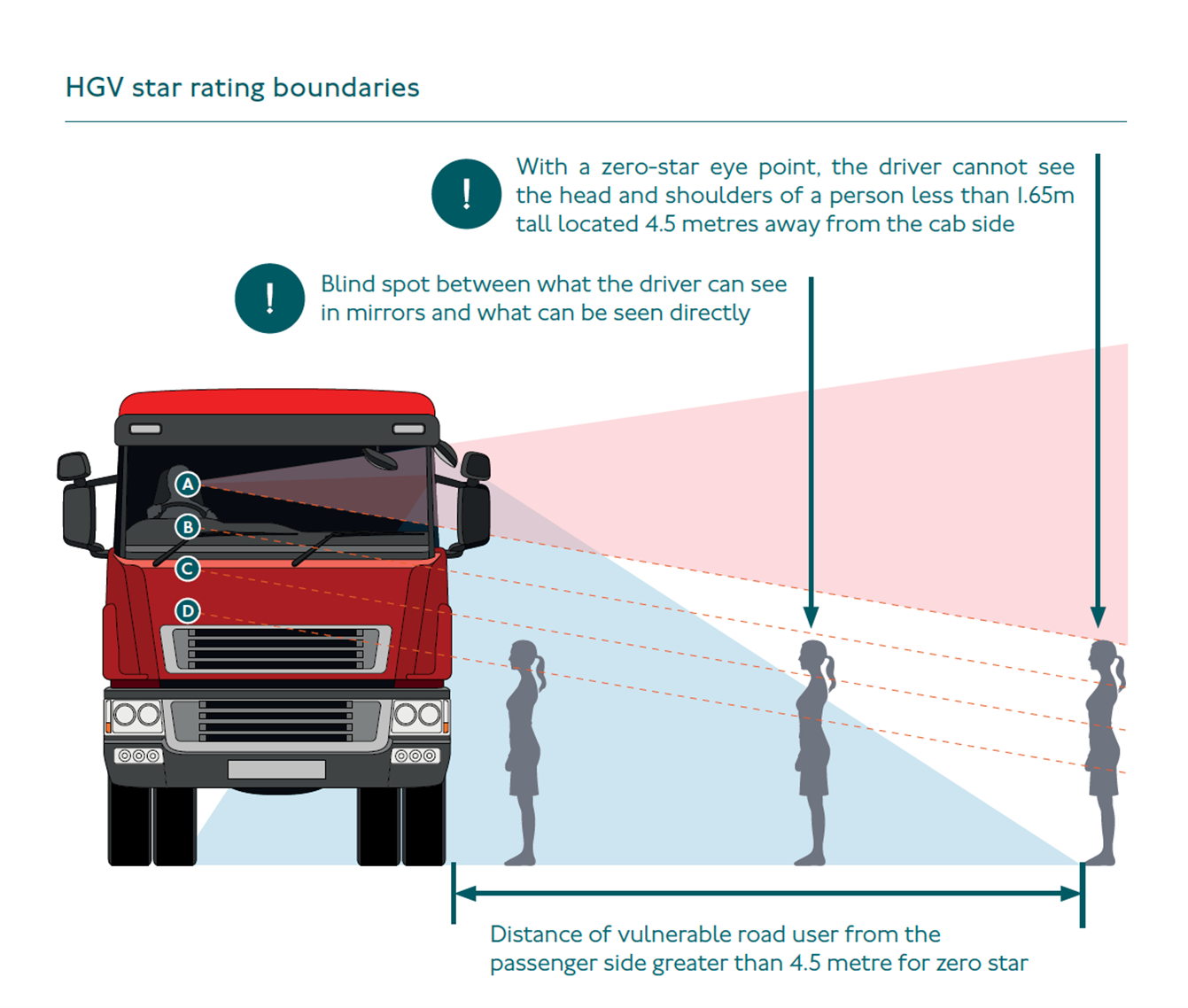Direct Vision Standards: The Final Enforcement Stage
Wednesday 16th April 2025
Last updated: 16th April 2025

The Mayor of London’s transport strategy includes an ambition to eliminate all road-related deaths and serious injuries across London by 2041.
Recognising that HGVs have historically been involved in more fatal collisions with vulnerable road users than any other category of vehicle, Transport for London’s (TfL) HGV Safety Permit Scheme first came into force on 26 October 2020.
The scheme applies to almost all HGVs of 12 tonnes gross vehicle weight and above and operates across all 32 London Boroughs and the City of London, 24 hours a day, every day of the year.
The most recent change to the rules means that, as of October 2024, vehicles must achieve a minimum 3-star rating under TfL’s Direct Vision Standard (DVS). Any vehicle that fails to meet the requirement must be fitted with approved Progressive Safe System (PSS) equipment in order to qualify for a permit. The permit itself is free of charge, and you can check the DVS star rating for any vehicle and apply online via the TfL site.
Up until 27 October 2024, fleet operators were able to apply for a grace period. However, no new applications are being accepted, and the three-star minimum standard applies to all relevant vehicles from 5 May this year.
Direct Vision Standard star rating
The Direct Vision Standard uses a star rating developed by researchers at Loughborough University in partnership with the DVS industry working group.
The main factors influencing a vehicle’s DVS star rating are the height of the driver’s eye above the ground, the size and position of windows (especially on the passenger side), the shape/length of the truck’s nose, and any obstructions such as the dashboard or pillars. Put simply, the lower and more ‘open’ the cab, the better the direct vision. In simple terms it looks like this:
(zero stars)
The driver is unable to see the head and shoulders of a person less than 1.65m tall located 4.5 metres away from the cab side.
★ (one star)
Slightly improved visibility: small design tweaks reduce some blind spots, but key danger zones remain hidden.
★★ (two stars)
Moderate direct vision: the driver can see more of the critical areas but still relies on mirrors and sensors for safety.
★★★ (three stars)
Good level of direct vision: significant blind spots are reduced and the driver can see most nearby road users.
★★★★ (four stars)
Very good direct vision: only minimal blind spots remain, with most vulnerable road users clearly visible.
★★★★★ (five stars)
Excellent all-round visibility: the driver can see almost all of the critical areas directly from the cab without aids.
The TfL graphic below shows how the sightline influences the number of DVS stars awarded.
A: Zero-star eye point
B: One-star eye point
C: Three-star eye point
D: Five-star eye point

Understanding the Progressive Safety System
DVS is supported by a set of safety measures known as the Progressive Safety System (PSS). Collectively, these measures are designed to mitigate blind spots caused by vehicle design. Fitting these measures doesn’t actually alter the vehicle’s DVS rating, but it does allow the operator to be issued with a safety permit. Key elements of the PSS are:
- Camera Monitoring System (CMS) fitted to the nearside of the vehicle
- Class V and VI mirrors, a CMS that replaces the mirrors, or a combination of the two
- Blind Spot Information System (BSIS)
- Moving Off Information System (MOIS)
- Side under-run protection
- Audible warning system when turning left (or right, for left-hand drive vehicles)
- External warning signage
All of the above equipment must be fitted by what TfL describe as a ‘competent and qualified fitter’. All the relevant technical specifications for the blind-spot and moving-off information systems are available on the TfL site.
How is the HGV Safety Permit scheme enforced?
The scheme is primarily enforced by TfL’s network of Automatic Number Plate Recognition (ANPR) cameras. This is the same approach and equipment used to operate the Congestion, Low Emission, and Ultra Low Emission Zones and enforcement happens in much the same way.
If an HGV over 12 tonnes is detected operating without a valid safety permit, a Penalty Charge Notice (PCN) of up to £550 may be issued. This is reduced to £275 if it is paid within 14 days.
There are a few exemptions to the scheme, including fire engines, ambulances, selected military vehicles, and council-operated gritters and snow ploughs. However, while these vehicles may be exempt from the permit scheme itself, the operator’s overall safety and duty of care obligations still apply.
Has DVS reduced serious accidents?
Official figures for 2023 show a 62% drop in the number of vulnerable road users killed by an HGV. If we hone in on fatal collisions where vision is a contributing factor, the change is even more noticeable, with a 75% reduction recorded since the scheme’s launch in 2019.
It’s also worth remembering that DVS is part of the Mayor of London’s wider Vision Zero strategy that sets a goal of 80% of journeys being made by sustainable modes, such as public transport, walking and cycling, by 2041. Clearly, addressing the dangers faced by vulnerable road users is a great way to encourage people to walk or cycle whenever it is safe and practical to do so.
The end of the grace period and full enforcement of the 3-star minimum standard from 5 May marks the final stage in DVS enforcement for the time being. That said, achieving the Mayor’s ambitions for road safety across London is likely to result in further consultations and adjustments in the years ahead. You can be sure that we will continue to monitor any developments and keep you fully up to date with the key things you need to know to run a safe and efficient commercial vehicle fleet. To find out more about how we can help, just get in touch.

